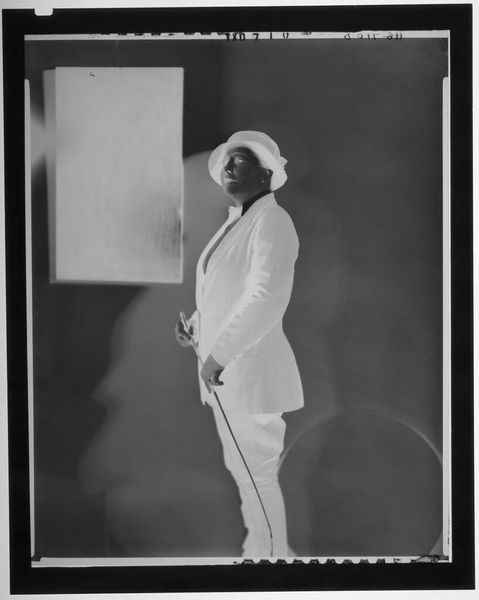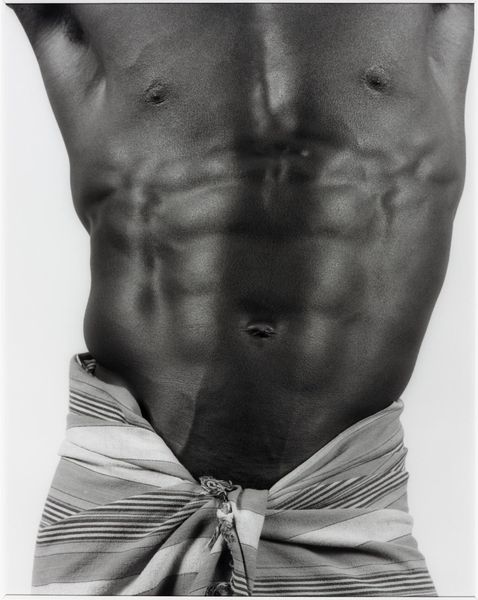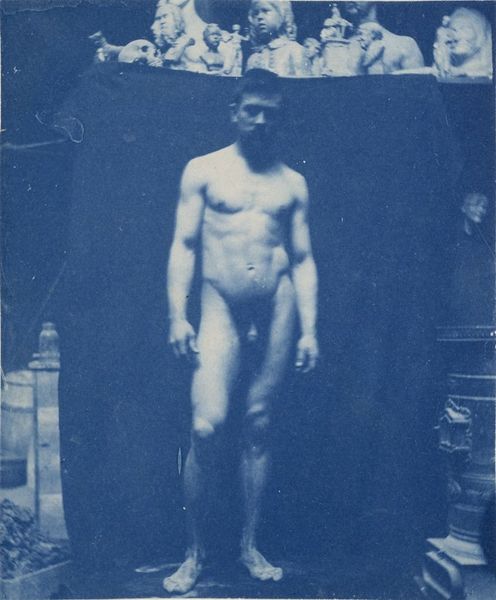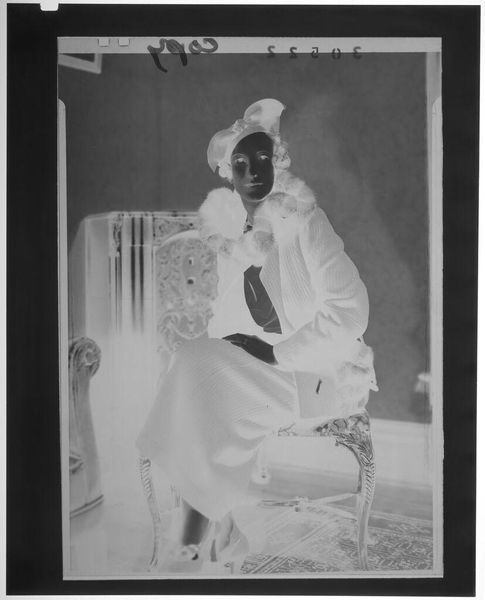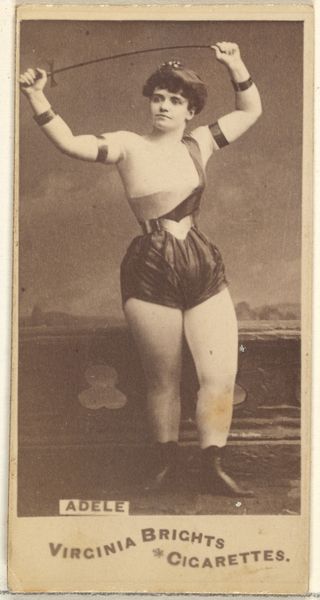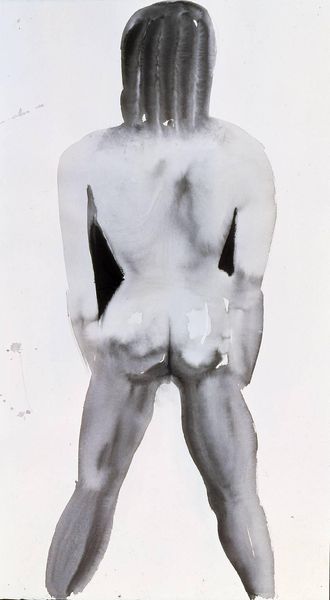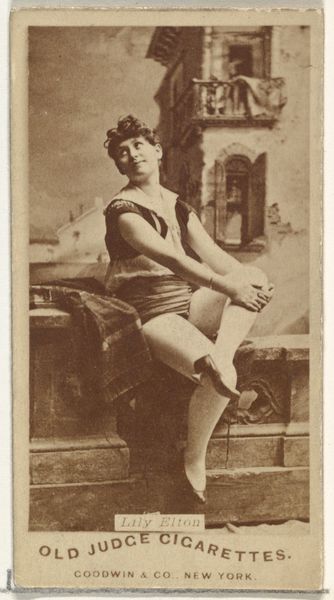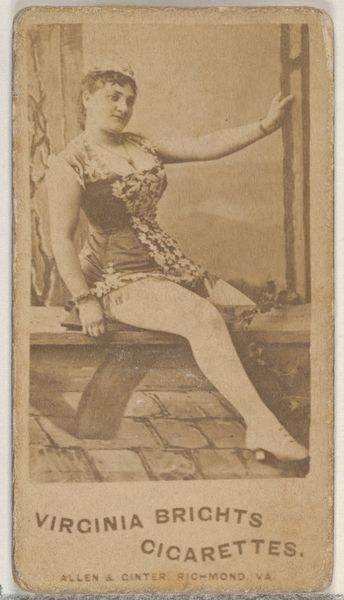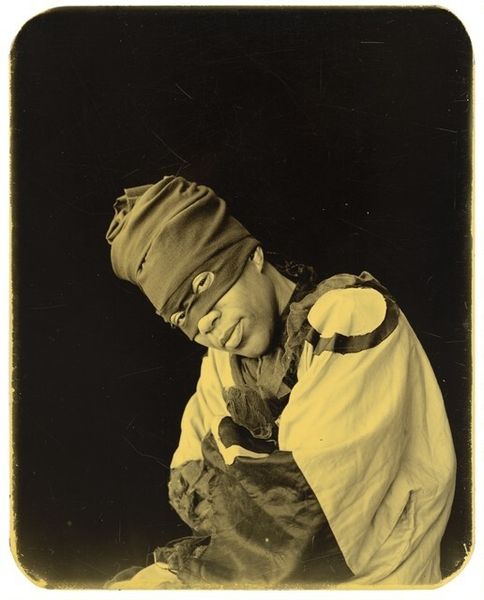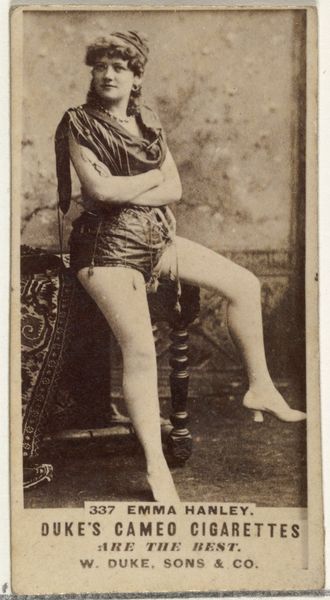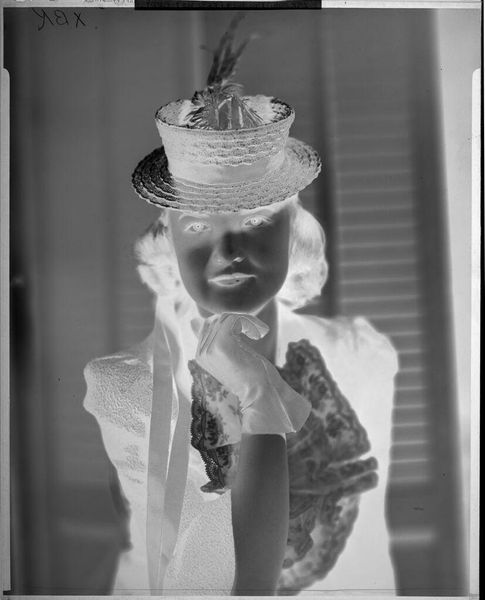
Dimensions: image/plate: 12.6 × 10.2 cm (4 15/16 × 4 in.)
Copyright: National Gallery of Art: CC0 1.0
Curator: Today, we're considering Deborah Luster’s striking portrait, “Terry Lathers, Angola, Louisiana” from 1999, a gelatin-silver print that seems both historical and strikingly present. Editor: My first impression is one of tension. There’s a vulnerability in his eyes that seems at odds with his physical strength. I’m curious about that contrast. Curator: The Angola in the title refers to the Louisiana State Penitentiary, a former plantation notorious for its brutal conditions. Luster’s portraits often engage with marginalized communities, prompting us to confront histories of incarceration and race. His attire signals manual labor, that cap indicating perhaps a food service role within the prison. Editor: So, this work becomes about visibility, giving a face and presence to someone often rendered invisible by the system. I'm struck by the printing process, the gelatin-silver adds this depth to the black and white image; the tonal range enhances the man's muscular form and that sharp background. There's real attention here to how materiality contributes to the portrait's impact. Curator: Exactly. Consider how the classic portrait format, which traditionally portrayed wealth and power, is here used to depict someone within a space of systemic disempowerment. The cross he wears adds another layer—ideas of redemption and personal identity against a background of dehumanization. How do the aesthetics and this knowledge converge, then? Editor: For me, it's about acknowledging labor—both physical and emotional. It makes you confront the brutal reality that he faces while also recognizing his individuality. It highlights a form of resilience. Curator: These photographs prompt an encounter. One is made to reconsider one's presumptions on criminality, labor, race, class and power. Editor: Looking again, the work feels very precise in its intention—a powerful challenge to how we perceive value, dignity, and the individuals who are caught within oppressive systems. Curator: A fitting work for reflection on these themes, captured through a sensitive eye.
Comments
No comments
Be the first to comment and join the conversation on the ultimate creative platform.
